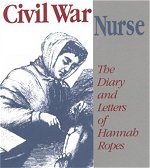 Civil War Nurse: The Diary and Letters of Hannah Ropes Hannah Ropes kept a diary for only one year during the time she served as a nurse in the Civil War. She actually supervised Louisa Mae Alcott and was responsible for many of the reforms in the hospital where she worked. She was a well-spoken woman who was also not afraid to stand up to her male supervisors. |
Women Soldiers and Nurses
|
|
|
|
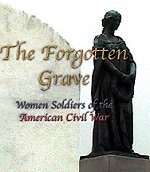
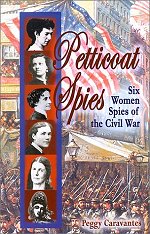 Petticoat Spies: Six Women Spies of the Civil War Describes the lives and wartime exploits of six women spies includes Sarah Emma Edmonds, Belle Boyd, Pauline Cushman, Rose O'Neal Greenhow, Elizabeth Van Lew, and Belle Edmondson. 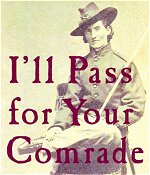 I'll Pass For Your Comrade: Women Soldiers in the Civil War Many people know about Clara Barton, the nurse who did so much to save soldiers' lives. But few have heard of Sarah Emma Edmonds, Rosetta Wakeman, or Mary Galloway. They were among the hundreds of women who assumed male identities, put on uniforms, enlisted in the Union or Confederate Army, and went into battle alongside their male comrades 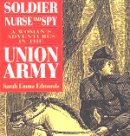 Memoirs of a Soldier, Nurse and Spy: A Woman's Adventures in the Union Army On April 25, 1861, Sarah Emma Edmonds alias Frank Thompson became a male nurse in Company F, of the 2nd Michigan Volunteer Infantry Regiment. This is 'his' story Kindle Available 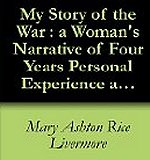 My Story of the War : a Woman's Narrative of Four Years Personal Experience as Nurse in the Union Army Kindle Version 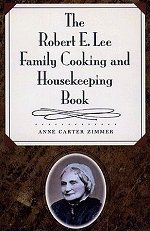 The Robert E. Lee Family Cooking and Housekeeping Book Part cookbook, part culinary history, part family history, this book is an engaging and enlightening glimpse into the household of a well-to-do, mid-nineteenth-century Virginia family. Seeking to learn more about her ancestors' daily lives, Anne Zimmer, great-granddaughter of Robert E. and Mary Lee, turned to her great-grandmother's small, now shabby notebook. Packed with recipes, shopping lists, and other domestic jottings, the notebook opened an intimate window onto an earlier way of life. |
It is an accepted convention that the Civil War was a man's fight. Images of women during that conflict center on self-sacrificing nurses, romantic spies, or brave ladies maintaining the home front in the absence of their men. The men, of course, marched off to war, lived in germ-ridden camps, engaged in heinous battle, languished in appalling prison camps, and died horribly, yet heroically. This conventional picture of gender roles during the Civil War does not tell the entire story. Men were not the only ones to fight that war. Women bore arms and charged into battle, too. Like the men, there were women who lived in camp, suffered in prisons, and died for their respective causes. Both the Union and Confederate armies forbade the enlistment of women. Women soldiers of the Civil War therefore assumed
Livermore and the soldiers in the Union army were not the only ones who knew of soldier-women. Ordinary citizens heard of them, too. Mary Owens, discovered to be a woman after she was wounded in the arm, returned to her Pennsylvania home to a warm reception and press coverage. She had served for eighteen months under the alias John Evans.(3) In the post - Civil War era, the topic of women soldiers continued to arise in both The existence of soldier-women was no secret during or after the Civil War. The reading public, at least, was well aware that these women rejected Victorian social constraints confining them to the domestic sphere. Their motives were open to speculation, perhaps, but not their actions, as numerous newspaper stories and obituaries of women soldiers testified. Most of the articles provided few specific details about the individual woman's army career. For example, the obituary of Satronia Smith Hunt merely stated she enlisted in an Iowa regiment with her first husband. He died of battle wounds, but she apparently emerged from the war unscathed.(5) An 1896 story about Mary Stevens Jenkins, who died in 1881, tells an equally brief tale. She enlisted in a Pennsylvania regiment when still a schoolgirl, remained in the army two years, received several wounds, and was discharged without anyone ever realizing she was female.(6) The press seemed unconcerned about the women's actual military exploits. Rather, the fascination lay in the simple fact that they had been in the army. The army itself, however, held no regard for women soldiers, Union or Confederate. Indeed, despite recorded evidence to the contrary, the U.S. Army tried to deny that women played a military role, however small, in the Civil War. On October 21, 1909, Ida Tarbell of The American Magazine wrote to Gen. F. C. Ainsworth, the adjutant general: "I am anxious to know whether your department has any record of the number of women who enlisted and served in the Civil War, or has it any record of any women who were in the service?" She received swift reply from the Records and Pension Office, a division of the Adjutant General's Office (AGO), under Ainsworth's signature. The response read in part: I have the honor to inform you that no official record has been found in the War Department showing specifically that any woman was ever enlisted in the military service of the United States as a member of any organization of the Regular or Volunteer Army at any time during the period of the civil war. It is possible, however, that there may have been a few instances of women having served as soldiers for a short time without their sex having been detected, but no record of such cases is known to exist in the official files.(7)This response to Ms. Tarbell's request is untrue. One of the duties of the AGO was maintenance of the U.S. Army's archives, and the AGO took good care of the extant records created during that conflict. By 1909 the AGO had also created compiled military service records (CMSR) for the participants of the Civil War, both Union and Confederate, through It is an accepted convention that the Civil War was a man's fight. Images of women during that conflict center on self-sacrificing nurses, romantic spies, or brave ladies maintaining the home front in the absence of their men. The men, of course, marched off to war, lived in germ-ridden camps, engaged in heinous battle, languished in appalling prison camps, and died horribly, yet heroically. This conventional picture of gender roles during the Civil War does not tell the entire story. Men were not the only ones to fight that war. Women bore arms and charged into battle, too. Like the men, there were women who lived in camp, suffered in prisons, and died for their respective causes. Both the Union and Confederate armies forbade the enlistment of women. Women soldiers of the Civil War therefore assumed masculine names, disguised themselves as men, and hid the fact they were female. Because they passed as men, it is impossible to know with any certainty how many women soldiers served in the Civil War. Estimates place as many as 250 women in the ranks of the Confederate army.(1) Writing in 1888, Mary Livermore of the U.S. Sanitary Commission remembered that: Some one has stated the number of women soldiers known to the service as little less than four hundred. I cannot vouch for the correctness of this estimate, but I am convinced that a larger number of women disguised themselves and enlisted in the service, for one cause or other, than was dreamed of. Entrenched in secrecy, and regarded as men, they were sometimes revealed as women, by accident or casualty. Some startling histories of these military women were current in the gossip of army life.(2)Livermore and the soldiers in the Union army were not the only ones who knew of soldier-women. Ordinary citizens heard of them, too. Mary Owens, discovered to be a woman after she was wounded in the arm, returned to her Pennsylvania home to a warm reception and press coverage. She had served for eighteen months under the alias John Evans.(3) In the post - Civil War era, the topic of women soldiers continued to arise in both literature and the press. Frank Moore's Women of the War , published in 1866, devoted an entire chapter to the military heroines of the North. A year later, L. P. Brockett and Mary Vaughan mentioned ladies "who from whatever cause . . . donned the male attire and concealed their sex . . . [who] did not seek to be known as women, but preferred to pass for men."(4) Loreta Velazquez published her memoirs in 1876. She served the Confederacy as Lt. Harry Buford, a self-financed soldier not officially attached to any regiment. The existence of soldier-women was no secret during or after the Civil War. The reading public, at least, was well aware that these women rejected Victorian social constraints confining them to the domestic sphere. Their motives were open to speculation, perhaps, but not their actions, as numerous newspaper stories and obituaries of women soldiers testified. Most of the articles provided few specific details about the individual woman's army career. For example, the obituary of Satronia Smith Hunt merely stated she enlisted in an Iowa regiment with her first husband. He died of battle wounds, but she apparently emerged from the war unscathed.(5) An 1896 story about Mary Stevens Jenkins, who died in 1881, tells an equally brief tale. She enlisted in a Pennsylvania regiment when still a schoolgirl, remained in the army two years, received several wounds, and was discharged without anyone ever realizing she was female.(6) The press seemed unconcerned about the women's actual military exploits. Rather, the fascination lay in the simple fact that they had been in the army. The army itself, however, held no regard for women soldiers, Union or Confederate. Indeed, despite recorded evidence to the contrary, the U.S. Army tried to deny that women played a military role, however small, in the Civil War. On October 21, 1909, Ida Tarbell of The American Magazine wrote to Gen. F. C. Ainsworth, the adjutant general: "I am anxious to know whether your department has any record of the number of women who enlisted and served in the Civil War, or has it any record of any women who were in the service?" She received swift reply from the Records and Pension Office, a division of the Adjutant General's Office (AGO), under Ainsworth's signature. The response read in part: I have the honor to inform you that no official record has been found in the War Department showing specifically that any woman was ever enlisted in the military service of the United States as a member of any organization of the Regular or Volunteer Army at any time during the period of the civil war. It is possible, however, that there may have been a few instances of women having served as soldiers for a short time without their sex having been detected, but no record of such cases is known to exist in the official files.(7)This response to Ms. Tarbell's request is untrue. One of the duties of the AGO was maintenance of the U.S. Army's archives, and the AGO took good care of the extant records created during that conflict. By 1909 the AGO had also created compiled military service records (CMSR) for the participants of the Civil War, both Union and Confederate, through painstaking copying of names and remarks from official federal documents and captured Confederate records. Two such CMSRs prove the point that the army did have documentation of the service of women soldiers. |
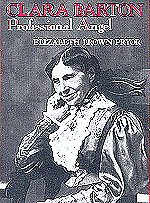 Clara Barton Professional Angel This eloquently told story of Clara Barton digs deep into who exactly Clara Barton was and the many areas in which Clara was an agent for change in society |
The Union CMSR for John Williams of the Seventeenth Missouri Infantry, Company H, shows that the nineteen-year-old soldier enlisted as a private on October 3, 1861, in St. Louis and was mustered into the regiment on the seventh. Later that month, Williams was discharged on the grounds: "proved to be a woman."(8) The Confederate CMSR for Mrs. S. M. Blaylock, Twenty-sixth North Carolina Infantry, Company F, states: This lady dressed in men's clothes, Volunteered [sic], received bounty and for two weeks did all the duties of a soldier before she was found out, but her husband being discharged, she disclosed the fact, returned the bounty, and was immediately discharged April 20, 1862.(9)Another woman documented in the records held by the AGO was Mary Scaberry, alias Charles Freeman, Fifty-second Ohio Infantry. Scaberry enlisted as a private in the summer of 1862 at the age of seventeen. On November 7 she was admitted to the General Hospital in Lebanon, Kentucky, suffering from a serious fever. She was transferred to a hospital in Louisville, and on the tenth, hospital personnel discovered "sexual incompatibility [sic]." In other words, the feverish soldier was female. Like John Williams, Scaberry was discharged from Union service.(10)
Records from the AGO show that Sarah Edmonds, a Canadian by birth, assumed the alias of Franklin Thompson and enlisted as a private in the Second Michigan Infantry in Detroit on May 25, 1861. Her duties while in the Union army included regimental nurse and mail and despatch carrier. Her regiment AGO records also reveal that on August 3, 1862, a nineteen-year-old Irish immigrant named Albert D. J. Cashier, described as having a light complexion, blue eyes, and auburn hair, enlisted in the Ninety-fifth Illinois Infantry. Cashier served steadily until August 17, 1865, when the regiment was mustered out of the Federal army. Cashier participated in approximately forty battles and skirmishes in those long, hard four years. After the war, Cashier worked as a laborer, eventually drew a pension, and finally went to live in the Quincy, Illinois, Soldiers' Home. In 1913 a surgeon at the home discovered that Albert D. J. Cashier was a woman. A public disclosure of the finding touched off a storm of sensational newspaper stories, for Cashier had lived her entire adult life as a man. None of Cashier's former comrades-in-arms ever suspected that he was a she. Apparently, neither did the commandant at the Soldiers' Home. She died October 11, 1914, in an insane asylum.(12) [A deposition from a fellow soldier taken in 1915 revealed that her deception was quite complete.] |
 Memoirs of a Soldier, Nurse and Spy: A Woman's Adventures in the Union Army On April 25, 1861, Sarah Emma Edmonds alias Frank Thompson became a male nurse in Company F, of the 2nd Michigan Volunteer Infantry Regiment. This is 'his' story 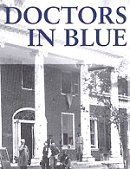 Doctors in Blue: The Medical History of the Union Army in the Civil War An excellent treatment of a rather specialized subject |
Despite the fact that the U.S. Army did not acknowledge or advertise their existence, it is surprising that the women soldiers of the Civil War are not better known today. After all, their existence was known at the time and through the rest of the nineteenth century. Even though some modern writers have considered Seelye and Cashier, the majority of historians who have written about the common soldiers of the war have either ignored women in the ranks or trivialized their experience. While references, usually in passing, are sometimes found, the assumption by many respected Civil War historians is that soldier-women were eccentric and their presence isolated. Textbooks hardly ever mention these women. The writings of Bell Wiley and Mary Massey are good examples. Wiley wrote at some length of "the gentler sex who disguised themselves and swapped brooms for muskets [who] were able to sustain the deception for amazingly long periods of time." But he later refers to them, indirectly, as "freaks and distinct types."(13) Massey erroneously asserted that "probably most of the women soldiers were prostitutes or concubines."(14) For the most part, modern researchers looking for evidence of soldier-women must rely heavily upon Civil War diaries and late nineteenth-century memoirs. It is true that the military service of women did not affect the outcome of campaigns or battles. Their service did not alter the course of the war. Compared with the number of men who fought, the women are statistically irrelevant. But the women are significant because they were there and they were not supposed to be. The late nineteenth-century newspaper writers grasped this point. The actions of Civil War soldier-women flew in the face of mid-nineteenth-century society's characterization of women as frail, subordinate, passive, and not interested in the public realm. Simply because the woman soldier does not fit the traditional female image, she should not be excluded from, or misinterpreted in, current and future historical writings. While this essay cannot discuss all the soldier-women, their lives and military records, recent chroniclers of the Civil War and women's history have begun to note the gallantry of women in the ranks during the war.(15) Most important, recent works refrain from stereotyping the women soldiers as prostitutes, mentally ill, homosexual, social misfits, or anything other than what they were: soldiers fighting for their respective governments of their own volition. It is perhaps hard to imagine how the women soldiers maintained their necessary deception or even how they successfully managed to enlist. It was probably very easy. In assuming the male disguise, women soldiers picked male names. Army recruiters, both Northern and Southern, did not ask for proof of identity. Soldier-women bound their breasts when necessary, padded the waists of their trousers, and cut their hair short. Loreta Velazquez wore a false mustache, developed a masculine gait, learned to smoke cigars, and padded her uniform coat to make herself look more muscular. While recruits on both sides of the conflict were theoretically subject to physical examinations, those exams were usually farcical. Most recruiters only looked for visible handicaps, such as deafness, poor eyesight, or lameness. Neither army standardized the medical exams, and those charged with performing them hardly ever ordered recruits to strip. That roughly 750 women enlisted attests to the lax and perfunctory nature of recruitment physical checks. Once in the ranks, successful soldier-women probably learned to act and talk like men. With their uniforms loose and ill-fitting and with so many underage boys in the ranks, women, especially due to their lack of facial hair, could pass as young men. Also, Victorian men, by and large, were modest by today's standards. Soldiers slept in their clothes, bathed in their underwear, and went as long as six weeks without changing their underclothes. Many refused to use the odorous and disgusting long, open-trenched latrines of camp. Thus, a woman soldier would not call undue attention to herself if she acted modestly, trekked to the woods to answer the call of nature and attend to other personal matters, or left camp before dawn to privately bathe in a nearby stream.(16) Militarily, the women soldiers faced few disadvantages. The vast majority of the common soldiers during the Civil War were former civilians who volunteered for service. These amateur citizen soldiers enlisted ignorant of army life. Many privates had never fired a gun before entering the army. The women soldiers learned to be warriors just like the men. The women soldiers easily concealed their gender in order to fulfill their desire to fight. An unknown number of them, like Cashier, Jenkins, and Hunt, were never revealed as women during their army stint. Of those who were, very few were discovered for acting unsoldierly or stereotypically feminine. Though Sarah Collins of Wisconsin was suspected of being female by the way she put on her shoes, she was atypical.(17) Also unusual were the Union women under Gen. Philip Sheridan's command, one a teamster and the other a private in a cavalry regiment, who got drunk and fell into a river. The soldiers who rescued the pair made the gender discoveries in the process of resuscitating them. Sheridan personally interviewed the two and later described the woman teamster as coarse and the "she-dragoon" as rather prepossessing, even with her unfeminine suntan.(18) He did not state their real names, aliases, or regiments. For the most part, women were recognized after they had received serious wounds or died. Mary Galloway was wounded in the chest during the Battle of Antietam. Clara Barton, attending to the wound, discovered the gender of the soft-faced "boy" and coaxed her into revealing her true identity and going home after recuperation.(19) One anonymous woman wearing
Some soldiers were revealed as women after getting captured. Frances Hook is a good example. She and her brother, orphans, enlisted together early in the war. She was twenty-two years old, of medium build, with hazel eyes and dark brown hair. Even though her brother was killed in action at Pittsburgh Landing, Hook continued service, probably in an Illinois infantry regiment, under the alias Frank Miller. In early 1864, Confederates captured her near Florence, Alabama; she was shot in the thigh during a battle and left behind with other wounded, who were also captured. While imprisoned in Atlanta, her captors realized her gender. After her exchange at Graysville, Georgia, on February 17, 1864, she was cared for in Union hospitals in Tennessee, then discharged and sent North in June. Having no one to return to, she may have reenlisted in another guise and served the rest of the war. Frances Hook later married, and on March 17, 1908, her daughter wrote the AGO seeking confirmation of her mother's military service. AGO clerks searched pertinent records and located documentation.(22) Other prisoners of war included Madame Collier and Florina Budwin. Collier was a federal soldier from East Tennessee who enjoyed army life until her capture and subsequent imprisonment at Belle Isle, Virginia. She decided to make the most of the difficult situation and continued concealing her gender, hoping for exchange. Another prisoner learned her secret and reported it to Confederate authorities, who sent her North under a flag of truce. Before leaving, Collier indicated that another woman remained incarcerated on the island.(23) Florina Budwin and her husband enlisted together, served side by side in battle, were captured at the same time by Confederates, and both sent to the infamous Andersonville prison. (The date of their incarceration has not been determined.) Mr. Budwin died there in the stockade, but Mrs. Budwin survived until after her transfer with other prisoners in late 1864 to a prison in Florence, South Carolina. There she was stricken by an unspecified epidemic, and a Southern doctor discovered her identity. Despite immediately receiving better treatment, she died January 25, 1865.(24) The women soldiers of the Civil War engaged in combat, were wounded and taken prisoner, and were killed in action. They went to war strictly by choice, knowing the risks involved. Their reasons for doing so varied greatly. Some, like Budwin and Hook, wished to be by the sides of their loved ones. Perhaps others viewed war as excitement and travel. Working class and poor women were probably enticed by the bounties and the promise of a regular paycheck. And of course, patriotism was a primary motive. Sarah Edmonds wrote in 1865, "I could only thank God that I was free and could go forward and work, and I was not obliged to stay at home and weep."(25) Obviously, other soldier-women did not wish to stay at home weeping, either. Herein lies the importance of the women combatants of the Civil War: it is not their individual exploits but the fact that they fought. While their service could not significantly alter the course of the war, women soldiers deserve remembrance because their actions display them as uncommon and revolutionary, with a valor at odds with Victorian views of women's proper role. Quite simply, the women in the ranks, both Union and Confederate, refused to stay in their socially mandated place, even if it meant resorting to subterfuge to achieve their goal of being soldiers. They faced not only the guns of the adversary but also the sexual prejudices of their society. The women soldiers of the Civil War merit recognition in modern American society because they were trailblazers. Women's service in the military is socially accepted today, yet modern women soldiers are still officially barred from direct combat. Since the Persian Gulf war, debate has raged over whether women are fit for combat, and the issue is still unresolved. The women soldiers of the Civil War were capable fighters. From a historical viewpoint, the women combatants of 1861 to 1865 were not just ahead of their time; they were ahead of our time. By DeAnne Blanton Notes1. Lauren Burgess, "'Typical' Soldier May Have Been Red-Blooded American Woman," The Washington Times , Oct. 5, 1991. |
 Civil War Nurse Barbie Part of the American Stories Collection. |
Women in the Civil War Women Subject Reference Books Womens Suffrage Timeline Women of the Suffrage Movement Civil War Recipe Reference American Civil War Exhibits Kids Zone Soldiers Civil War Letters |
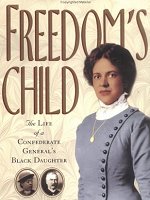 Freedom's Child: The Life of a Confederate General's Black Daughter This is one woman's personal history, she is the grand-daughter of a white Confederate General who openly acknowledged his mixed-race offspring but who also lived in the violent segregated world of the deep South |
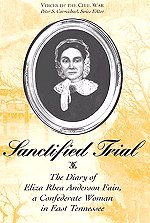 Sanctified Trial: The Diary of Eliza Rhea Anderson Fain, a Confederate Woman in East Tennessee The Diary of Eliza Rhea Anderson Fain |
Kindle Available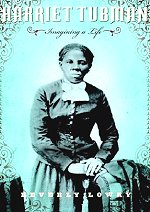 Harriet Tubman: Imagining a Life: A Biography Travel with Tubman along the treacherous route of the Underground Railroad. Hear of her friendships with Frederick Douglass, John Brown, and other abolitionists. |
Kindle Available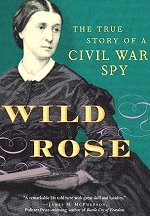 Rose O'Neale Greenhow, Civil War Spy Fearless spy for the Confederacy, glittering Washington hostess, legendary beauty and lover, Rose Greenhow risked everything for the cause she valued more than life itself |
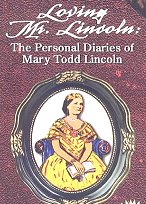 Loving Mr. Lincoln: The Personal Diaries of Mary Todd Lincoln Chronicles life, love, and daily struggles with Abraham in their 26 years together. In frank, haunting journal entries, Mary describes the pain she felt when Abraham left her at the altar, when her sons died, and when Abraham's political career seemed to be at an end |
Kindle Available The War-Time Journal of a Georgia Girl, 1864-1865 Eliza Andrews' diary is more cogent than any novel about the Civil War. General Sherman laid a track, and ELiza had to follow his footsteps through Georgia. Her insights into war and the havoc it wrought in the South are accompanied by her own editorial comments forty-four years later |
Kindle Available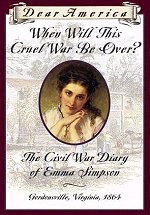 When Will This Cruel War Be Over? A Confederate girl in Virginia, in 1864, Emma Simpson writes about the hardships of growing up during a turbulent time |
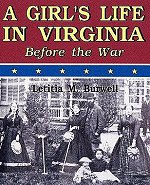 A Girl's Life in Virginia Before the War First published in 1895. An engrossing eyewitness account of antebellum plantation life as it really was |
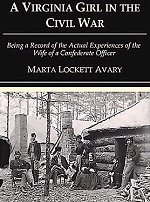 Record of the Actual Experiences of the Wife of a Confederate Officer The author tells of her many travels across the war-torn South, capture behind enemy lines, encounter with Belle Boyd, friendship with General J. E. B. Stuart, and the devastation suffered by the citizens of Richmond in the last days of the Confederacy. |
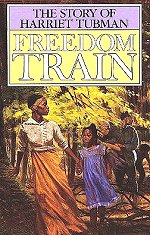 Freedom Train: The Story of Harriet Tubman Harriet escaped North, by the secret route called the Underground Railroad. Harriet didn't forget her people. Again and again she risked her life to lead them on the same secret, dangerous journey. |
Kindle Available The Glory Cloak: A Novel of Louisa May Alcott and Clara Barton From childhood, Susan Gray and her cousin Louisa May Alcott have shared a safe, insular world of outdoor adventures and grand amateur theater -- a world that begins to evaporate with the outbreak of the Civil War. Frustrated with sewing uniforms and wrapping bandages, the two women journey to Washington, D.C.'s Union Hospital to volunteer as nurses. |
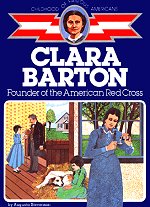 Clara Barton Founder of the American Red Cross Young Clara Barton is shy and lonely in her early days at boarding school. She is snubbed by the other girls because she doesn't know how to talk to them. But when she gets an opportunity to assist the local doctor, her shyness disappears, and Clara begins to discover her true calling as a nurse. |
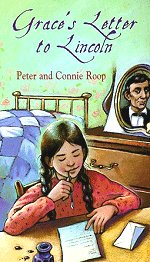 Grace's Letter to Lincoln Many important details of the time period help to make the reader understand what life was like then. It also includes photos of the actual letters written between Grace and Mr. Lincoln |
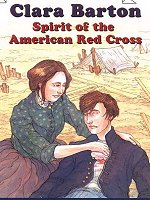 Clara Barton Spirit of the American Red Cross Ready To Read - Level Three Clara Barton was very shy and sensitive, and not always sure of herself. But her fighting spirit and desire to help others drove her to become one of the world's most famous humanitarians. Learn all about the life of the woman who formed the American Red Cross. |
 Day Of Tears Through flashbacks and flash-forwards, and shifting first-person points of view, readers will travel with Emma and others through time and place, and come to understand that every decision has its consequences, and final judgment is passed down not by man, but by his maker. |
Kindle Available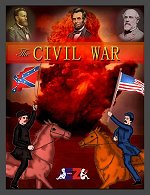 The Civil War Introduces young readers to the harrowing true story of the American Civil War and its immediate aftermath. A surprisingly detailed battle-by-battle account of America's deadliest conflict ensues, culminating in the restoration of the Union followed by the tragic assassination of President Lincoln |
Kindle Available A Yankee Girl at Fort Sumter Tale of a girl and her family from Boston living in Charleston, SC during the months leading up to the beginning of the Civil War by the attack on Fort Sumter. The reader senses the inhumanity of slavery through Sylvia's experiences. |
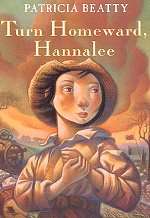 Turn Homeward, Hannalee During the closing days of the Civil War, plucky 12-year-old Hannalee Reed, sent north to work in a Yankee mill, struggles to return to the family she left behind in war-torn Georgia. "A fast-moving novel based upon an actual historical incident with a spunky heroine and fine historical detail."--School Library Journal. |
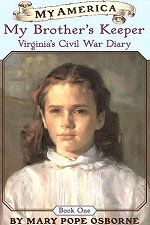 My Brothers Keeper Virginia Dickens is angry. Her father and brother Jed have left her behind while they go off to Uncle Jack's farm to help him hide his horses from Confederate raiders. It's the summer of 1863 and Pa and Jed believe 9-year-old Virginia will be out of harm's way in the sleepy little town of Gettysburg, Pennsylvania. |
 I Thought My Soul Would Rise and Fly: The Diary of Patsy, a Freed Girl, Mars Bluff, South Carolina 1865 Not only is 12-year-old Patsy a slave, but she's also one of the least important slaves, since she stutters and walks with a limp. So when the war ends and she's given her freedom, Patsy is naturally curious and afraid of what her future will hold. |
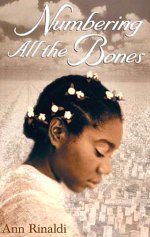 Numbering The Bones The Civil War is at an end, but for thirteen-year-old Eulinda, it is no time to rejoice. Her younger brother Zeke was sold away, her older brother Neddy joined the Northern war effort,. With the help of Clara Barton, the eventual founder of the Red Cross, Eulinda must find a way to let go of the skeletons from her past. |
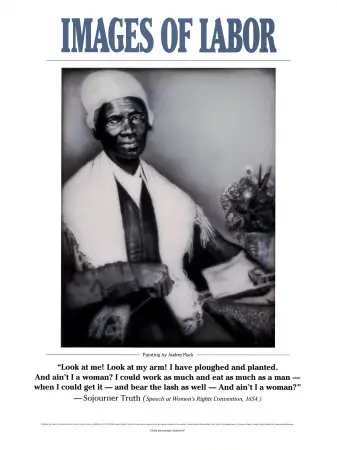
Images of Labor - Sojourner Truth Art Print 18 in. x 24 in. Buy at AllPosters.com Framed Mounted |
|
The Confederate Cookbook: Family Favorites from the Sons of Confederate Veterans This book contains over 340 of Dixie's finest recipes courtesy of contemporary Confederate kitchens from Florida to Alaska. Here you'll find the delicious, traditional dishes that evoke the flavour of the Old South, as well as savoury regional favourites from all over the country. Fascinating historic anecdotes and previously unpublished, nostalgic sepia-toned images of identified Confederate soldiers are here for maximum visual appeal, along with easy-to-use instructions for making so memorable dishes ever to grace your sideboard. The Sons of Confederate Veterans is a patriotic and hereditary organisation dedicated to preserving and celebrating the history and principles of the Confederate States of America. |
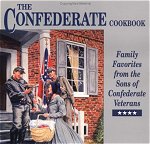 The Confederate Cookbook: Family Favorites from the Sons of Confederate Veterans |
 To 'Joy My Freedom: Southern Black Women's Lives and Labors after the Civil War |
To 'Joy My Freedom is a fascinating look at the long-neglected story of black women in postwar southern culture. Hunter examines the strategies these women (98 percent of whom worked as domestic servants) used to cope with low wages and poor working conditions and their efforts to master the tools of advancement, including literacy. Hunter explores not only the political, but the cultural, too, offering an in-depth look at the distinctive music, dance, and theater that grew out of the black experience in the South. |